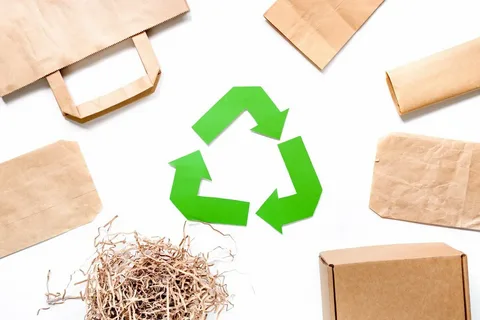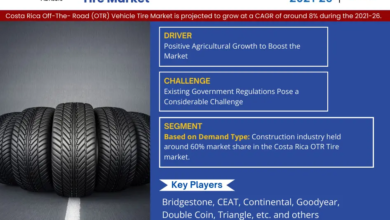
Table of Contents
1. Introduction
2. The Urgency of Sustainable Packaging
3. Benefits of Sustainable Packaging
3.1 Environmental Impact
3.2 Consumer Preference
4. Materials Revolutionizing Sustainable Packaging
4.1 Biodegradable Plastics
4.2 Plant-Based Materials
4.3 Recycled Content
5. Technological Advancements
5.1 Smart Packaging
5.2 Blockchain in Packaging
6. Collaborative Initiatives in the Industry
6.1 Cross-Industry Partnerships
6.2 Government Regulations
7. Challenges and Solutions
7.1 Cost Concerns
7.2 Innovations for Mass Production
8. Consumer Awareness and Education
9. Success Stories: Brands Embracing Sustainable Packaging
10. Future Projections
11. The Role of E-commerce in Sustainable Packaging
12. Small Steps, Big Impact: Sustainable Packaging at Home
13. Global Movements and Sustainable Packaging
14. Social Media Influence on Sustainable Packaging Trends
15. Conclusion
Article
Introduction
In a world where environmental concerns are at the forefront, sustainable packaging has become a pivotal topic in various industries. This article explores the latest trends and innovations in sustainable packaging, shedding light on the urgent need for change and the positive impact it can have on both the environment and consumer preferences.
The Urgency of Sustainable Packaging
As the detrimental effects of traditional packaging methods on the environment become increasingly apparent, the urgency to adopt sustainable alternatives grows. This section delves into the critical need for a shift towards eco-friendly packaging solutions.
Benefits of Sustainable Packaging
Examining the multifaceted advantages of sustainable packaging is essential to understand its significance. From reducing carbon footprints to aligning with consumer values, sustainable packaging offers a myriad of benefits.
Environmental Impact
Sustainable packaging significantly minimizes the ecological footprint, contributing to a healthier planet. By utilizing materials that decompose or can be easily recycled, the environmental impact is substantially reduced.
Consumer Preference
Modern consumers are more environmentally conscious than ever before. This subheading explores how sustainable packaging aligns with consumer values, creating a positive brand image and fostering loyalty.
Materials Revolutionizing Sustainable Packaging
The journey towards sustainable packaging is paved with innovative materials that challenge traditional norms.
Biodegradable Plastics
Biodegradable plastics are gaining traction as a viable alternative to conventional plastics. This section examines their characteristics, benefits, and challenges in widespread adoption.
Plant-Based Materials
Harnessing the power of nature, plant-based materials are emerging as a sustainable option. From cornstarch to sugarcane, these materials offer biodegradability without compromising functionality.
Recycled Content
The incorporation of recycled content in packaging materials is a key strategy. Exploring the advancements in recycling technology and its impact on sustainable packaging is crucial.
Technological Advancements
Technology plays a pivotal role in transforming the landscape of sustainable packaging.
Smart Packaging
Smart packaging incorporates technology to enhance functionality. From freshness indicators to interactive labels, this section explores how technology is elevating sustainable packaging.
Blockchain in Packaging
Blockchain technology ensures transparency and traceability in the supply chain. Unpacking the role of blockchain in sustainable packaging demonstrates its potential to revolutionize the industry.
Collaborative Initiatives in the Industry
Uniting efforts across industries and collaborating with governments are essential components of sustainable packaging initiatives.
Cross-Industry Partnerships
This subheading explores how collaborations between industries can lead to innovative solutions and widespread adoption of sustainable practices.
Government Regulations
Governments worldwide are implementing regulations to promote sustainable packaging. Examining these regulations and their impact on businesses is crucial for a comprehensive understanding.
Challenges and Solutions
While the shift to sustainable packaging is commendable, it comes with its set of challenges. This section addresses common concerns and offers potential solutions.
Cost Concerns
The perceived higher cost of sustainable packaging is a barrier for many businesses. Analyzing cost-effective alternatives and strategies to overcome financial obstacles is vital.
Innovations for Mass Production
Scaling sustainable packaging for mass production requires innovative solutions. This part explores technological advancements and strategies for seamless integration into large-scale manufacturing.
Consumer Awareness and Education
Educating consumers about the significance of sustainable packaging is pivotal for widespread adoption.
Success Stories: Brands Embracing Sustainable Packaging
Highlighting success stories of brands that have successfully embraced sustainable packaging sheds light on practical implementations and positive outcomes.
Future Projections
Predicting the future trends and advancements in sustainable packaging provides insights into the evolving landscape.
The Role of E-commerce in Sustainable Packaging
As e-commerce continues to thrive, examining its impact on sustainable packaging is essential.
Small Steps, Big Impact: Sustainable Packaging at Home
Empowering individuals to contribute to sustainable packaging at home through small lifestyle changes.
Global Movements and Sustainable Packaging
Exploring global movements advocating for sustainable packaging and their impact on industries and policies.
Social Media Influence on Sustainable Packaging Trends
Analyzing the role of social media in shaping consumer perceptions and trends related to sustainable packaging.
Conclusion
Summarizing the key takeaways and emphasizing the overarching impact of sustainable packaging on the environment, businesses, and consumers.
Frequently Asked Questions (FAQs)
- Why is sustainable packaging important for businesses?
- Sustainable packaging enhances brand image, attracts environmentally conscious consumers, and contributes to long-term business sustainability.
- What challenges do companies face when transitioning to sustainable packaging?
- Common challenges include perceived higher costs, the need for innovative production methods, and consumer education.
- How can consumers contribute to sustainable packaging initiatives?
- Consumers can make a difference by choosing products with eco-friendly packaging, recycling diligently, and supporting brands with sustainable practices.
- Are there any regulations governing sustainable packaging?
- Governments worldwide are implementing regulations to encourage and enforce sustainable packaging practices.
- What role does technology play in the future of sustainable packaging?
- Technology, including smart packaging and blockchain, is expected to play a pivotal role in enhancing the functionality and traceability of sustainable packaging.



